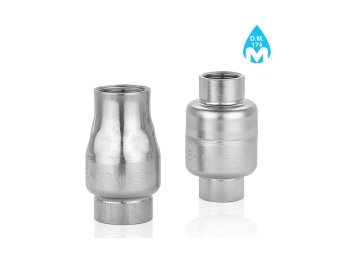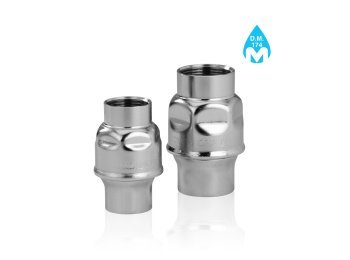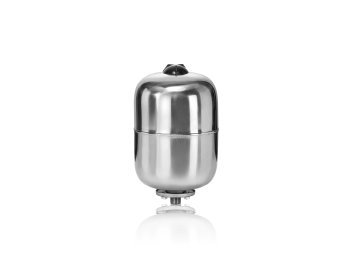Water hammer in plumbing systems: causes, damage and solutions.
Water hammer is a true shock wave caused by the sudden shutdown of fluid that over time damages pipes and plumbing elements.
A dull sound, like the sound a hammer makes when it vibrates a blow. It happens not infrequently in a plumbing system to experience this kind of noise, and every professional knows how important it is not to underestimate it. Water hammer is a phenomenon that very simply can be summarized as a pressure spike caused by the rapid change in flow velocity in the pipe. Small water hammer may be normal, but it is still essential to try to contain it as much as possible, with appropriate measures in the installation phase, to avoid damage to the system.The consequences of water hammer, in fact, are many and can involve damage to pipelines, expansion vessels, joint fittings, and equipment installed in the system.

It is quite easy to experience an example of water hammer. Think of the typical thud followed by pipe vibration when closing a ball hydraulic valve with instantaneous movement of the operating lever, as occurs in mixing units. Although immediate component failure does not occur in most cases, the cyclic nature of the stress still leads to the accumulation of damage that can result in sudden failure.
What is meant by water hammer?
Let us now try to see in more detail what this phenomenon consists of.Water hammer is an overpressure wave that occurs, for example, when an electric pump is stopped quickly or when an hydraulic valve is closed abruptly.The speed of the maneuver induces a perturbation in the liquid pressure that propagates in the pipeline starting from the stopping device and travels upstream, is reflected against other devices and against the bends in the circuit, and then gradually dampens on its return downstream.The speed at which the wave propagates backward along the pipeline is close to that of sound in liquids (about 300 m/s): however, it should be considered that the magnitude of the phenomenon depends on several factors. Certainly the closing speed of the devices, but also the velocity and viscosity of the fluid, and the shape, size and materials of the pipelines.If the pipelines are undersized, that is, if they have a smaller diameter than that of the pump, the fluid velocity decreases but the pressure is higher.In addition, the force of the pressure is greater at bends, that is, at the elbow joints of the system, which are often found in circuits with a small floor plan, as are domestic circuits.
How to prevent water hammer?
To protect the hydraulic system from the dreaded water hammer, there are several ways:- install a regulator to reduce the pressure within the circuit
- install check valves
- install anti-waterhammer reservoirs.
Devices such as pressure switches, by ensuring that the circuit operates within specified parameters, perform a safety function in that they help prevent system overload spikes.Another solution is check valves, which are to be installed along pipelines.
Check valves, in particular, are used to prevent overpressure waves from reaching the electric pumps, which is why they are installed immediately downstream, one for each pump.
The valves are usually installed in addition to specific anti-waterhammer expansion tanks.
These devices are also called anti-waterhammer lungs, precisely because of the mechanism of operation. They are rigid cylindrical vessels consisting of two chambers, one filled with circuit fluid, and the other containing pressurized air. The two chambers are separated by an elastic membrane. Since air is compressible, it acts as a shock absorber of overpressure peaks by compensating for changes and protecting the system from the consequences of hydraulic shock.
Inside the story...
Why do we use the expression ram strike to define this hydraulic phenomenon? The ram was an ancient war machine consisting in its simplest form of a long, sturdy wooden beam with a ram's iron head attached to the end. It appears to have been used first by the Carthaginians. It was used to break through city gates and walls with a succession of strong blows, like those felt in plumbing when the flow of fluid undergoes a sudden change.

























